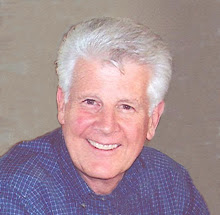We are now on the Glenn Highway, aka the Tok cutoff, which will take us 328 miles to Anchorage. We spent a quick night just outside of Tok at the Eagle Trail campground (This was also the name given to the fire). In the morning, the air was hazy with smoke and the smell of fire. We are traveling in the opposite direction, however, so we are quickly away from the fire.
We see our first swans on a tundra lake. There are two kinds, tundra swans and trumpeter. They are hard to tell apart except for the size. We think these were tundra swans.
The road follows several rivers and several summits, none oft which are very high – 2,000-3000 feet. We are amazed at the houses we see along here each with an airplane parked in the yard, and the book we are using describes any number of private runways and airports along here. We approach the small town of Chistochina – and see our first moose. At first I thought it was a brown automobile approaching us. Then I realized it was a moose. Its torso was so high, I could see oncoming headlights under its belly! It moved slowly across the highway very nonchalantly, despite the fact that there were cars coming broth both directions. It was off the highway before we could get a close look, but if you look carefully, you will see it in this picture.
We stopped at Gakona, a lodge that is the sight of first an Indian village of the Ahtna Athabascans (Gakona means rabbit), and then a trading post. It has a number of buildings built in 1904 that are on the National Historic Register. Nacho likes having his picture taken here. See if you can see him in the flowers on this old mining cart, then next to the wagon. He also liked the teepee.
We passed Gun Notch Mountain, with a square notch out of the very top of the mountain.
The road takes a cutoff at Glennallen – straight ahead takes you to Valdez, which is the subject of a lot of local press, given the recent oil rig blowout in the US Gulf. The Exxon Valdez ran aground here 30 years ago, and there is still controversy over how much oil was spilled, how much environmental damage it did and how little the fishing industry was compensated for their losses.
We are continuing to ward Anchorage. One summit we went over, they had the snow poles we saw earlier stuck into the side of the mountain. Out here then are stand alones, and you can see that this camper going under one makes it about 15 feet high.
We turned a corner to another beautiful vista. Nacho had his picture taken on the hood of the car. We then came in view of Mt. Drum and the unbelievable Matanuska Glacier, which starts so high in the mountain and comes down almost to the road. It hasn’t changed in 400 years! It is hard to imagine that you can see something so beautiful from the road.
We are now following the Matanuska River, which will take us all the way into Palmer. We stop at a lookout for a view of the River, the mountains, and a beautiful wild primrose.
We have made a promise to a friend that we would stop at the Musk Ox Farm just outside of Palmer. He has friends that work there. So that’s where we are headed next.







No comments:
Post a Comment